Eating at Bonnie’s: An Evolving Menu Grows Even Better
By Ian MacAllen on Tuesday, September 9th, 2025 at 4:39 pm
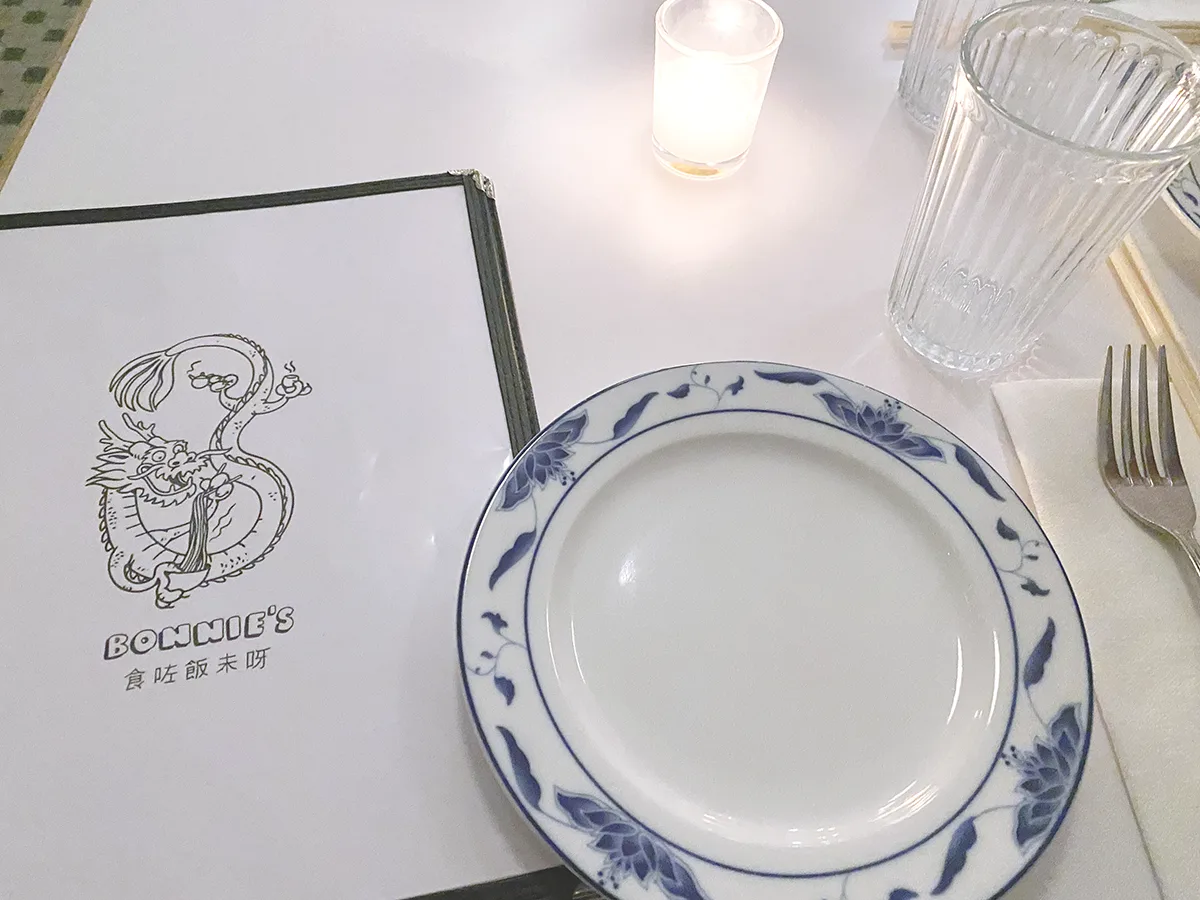
Bonnie’s opened in November of 2021 serving up a Cantonese-inspired menu, celebrating a cuisine historically linked to New York City, but displaced by other regional cuisines in recent decades. Owner Calvin Eng, a Brooklyn native, named the restaurant for his mother.
The opening immediately attracted crowds, in part because Eng had previously worked at nearby Win Son, a burgeoning empire. And there’s something ironic about this connection. Win Son’s success was part of a broader trend – perhaps one could argue, the instigator – of a new interest in Taiwanese cuisine around the city. Meanwhile, Bonnie’s opening signaled a renewed interest in Cantonese-style cooking, and if not the first to reinvent these recipes, it’s certainly part of a wider ongoing trend evident today.
New York City’s Chinatown has long been a center of Cantonese-style cuisine. The Chinese diaspora was not a universal movement, with various ethnic and regional groups migrating at different times, and settling in different parts of the United States. New York’s Chinatown has strong links to Hong Kong, and restaurants that began operating in the 1920s were largely influenced by Cantonese cuisine. That includes Nom Wah Tea Parlor, a now trendy Chinatown spot that has gone through various iterations since it was established in 1920.
However, beginning in the 1970s and early 1980s, flavors from the Sichuan province began influencing New York’s Chinese cuisine. According to Robert Siestsema at Eater, by the 1990s more sophisticated Sichuan menus started becoming popular, setting off a trend that displaced many Cantonese restaurants. Sichuan flavor is bold, spicy, and it’s come to dominate trendy, modern American Chinese cuisine.
Much of what makes Sichuan flavor possible is the unique spice of the Sichuan pepper. The United States banned the import of the pepper until 2007. The pepper creates a numbing sensation used to impart unique flavors into dishes, and can alter the flavor of other ingredients. Mission Chinese used this to great effect in their cocktails.
Sichuan cuisine over the first two decades of the 21st century really came into its own in New York. Early on there was Grand Sichuan, what the New York Times called the Famous Original Rays of Sichuan cooking given the number of spinoffs and copycats. Others have followed since, like Szechuan Mountain House and MáLà Project, but perhaps none were more influential than Mission Chinese. Danny Bowien started out as modernized interpretation of many classic Chinese American dishes using Sichuan flavors.
Notably, the original was based in San Francisco, but it became an instant hit when Bowien brought the restaurant to the city. New York has grown into Bowien’s primary sphere of influence with the restaurant undergoing numerous iterations, including a rat-infested basement location, an upscale white linen location, a Brooklyn warehouse location, and most recently as a semi-permanent “pop up.”
In many ways, Mission Chinese has clearly influenced some of the style choices at Bonnie’s. Bonnie’s celebrates the same neon party vibes that were the hallmark of the first New York location and the Brooklyn location that had operated on the border of East Williamsburg and Bushwick. Ryan Sutton described Bonnie’s as having “groovey bathroom lights”, and it’s hard not to think of the weird neon ceiling installation Mission Chinese had.
And while Bonnie’s hasn’t introduced tableside MSG salt shakes, the flavor is just as important to the menu with novelties like an MSG martini.
Eng’s menu celebrates MSG, and both he and Bowien have ended up featured side-by-side in numerous articles about the flavoring despite cooking dishes inspired by two very different cuisines. MSG is an important commonality here, and one long associated with Chinese American cooking. In 1960s America, racist anti-Chinese sentiment even blamed MSG on a number of ailments. The reputation stuck around for decades, with MSG as something of a villain to Americans. That started to change in recent years. Earlier this year, Eng released a cookbook, Salt Sugar MSG, an overview of Cantonese cooking, where, like at Bonnie’s, the flavor is celebrated
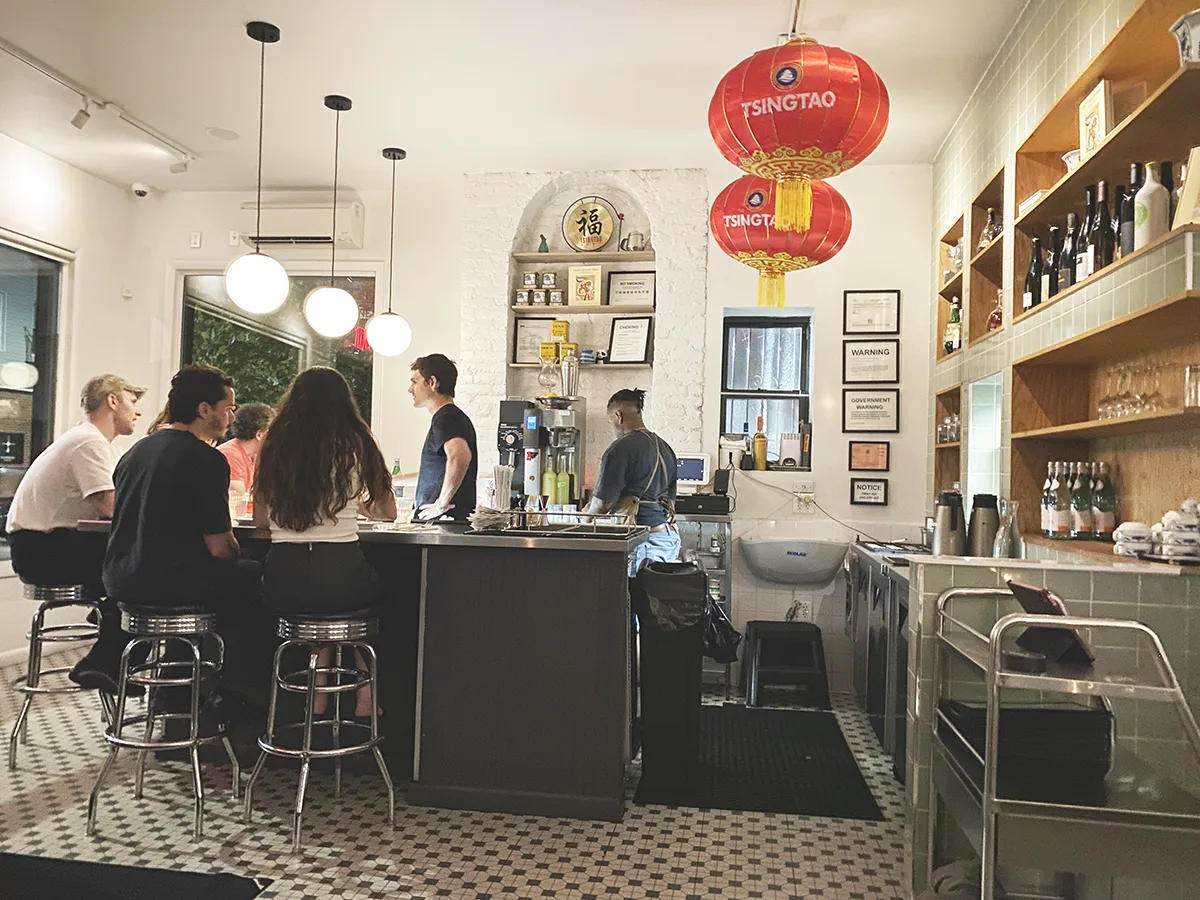
MSG produces the savory umami flavor, and that’s a big part of Cantonese cooking. Glutamate, the G, is a naturally occurring amino acid that shows up in a number of foods, especially Parmigiana Reggiano cheese, but more on that in a minute.
The arrival of Bonnie’s helped make Cantonese cuisine trendy again, especially in a modern, updated way. The menu when was new, inventive, and playful. It was not the food cooked by grandmother’s, but modern Brooklyn reinventions, and one piece of a new wave of trendy Cantonese restaurants like Potluck Club, Phoenix Palace, Uncle Lou, among others. Bonnie’s of course wasn’t the first, but it has become one of the hottest and splashiest examples.
We first ate at Bonnie’s in early 2022, a few months after it opened. Reservations were almost impossible, but we lucked into a late night slot in the large outdoor dining shed the restaurant had erected along Frost Street. The weather that evening was imperfect, cold and wet, and probably opened up the opportunity for us.
Finding a reservation three years later was notably easier, though we still took a late, 9 p.m. slot. We wondered if we would be eating as service wound down, but surprisingly, the restaurant began filling at the 9:30, and was more crowded when we left than when we had arrived a little before 9.
We noticed a few changes to the menu. In three years, Bonnie’s has become less Cantonese and more très Brooklyn. That’s not necessarily a bad thing, because the food was even better.
Two dishes notably missing from the current menu are Wun Tun en Brodo, a fish and shrimp wonton in a citrus broth and the Gnow Yuk Chow Mein, a black pepper steak with onions and peppers served over egg noodles.
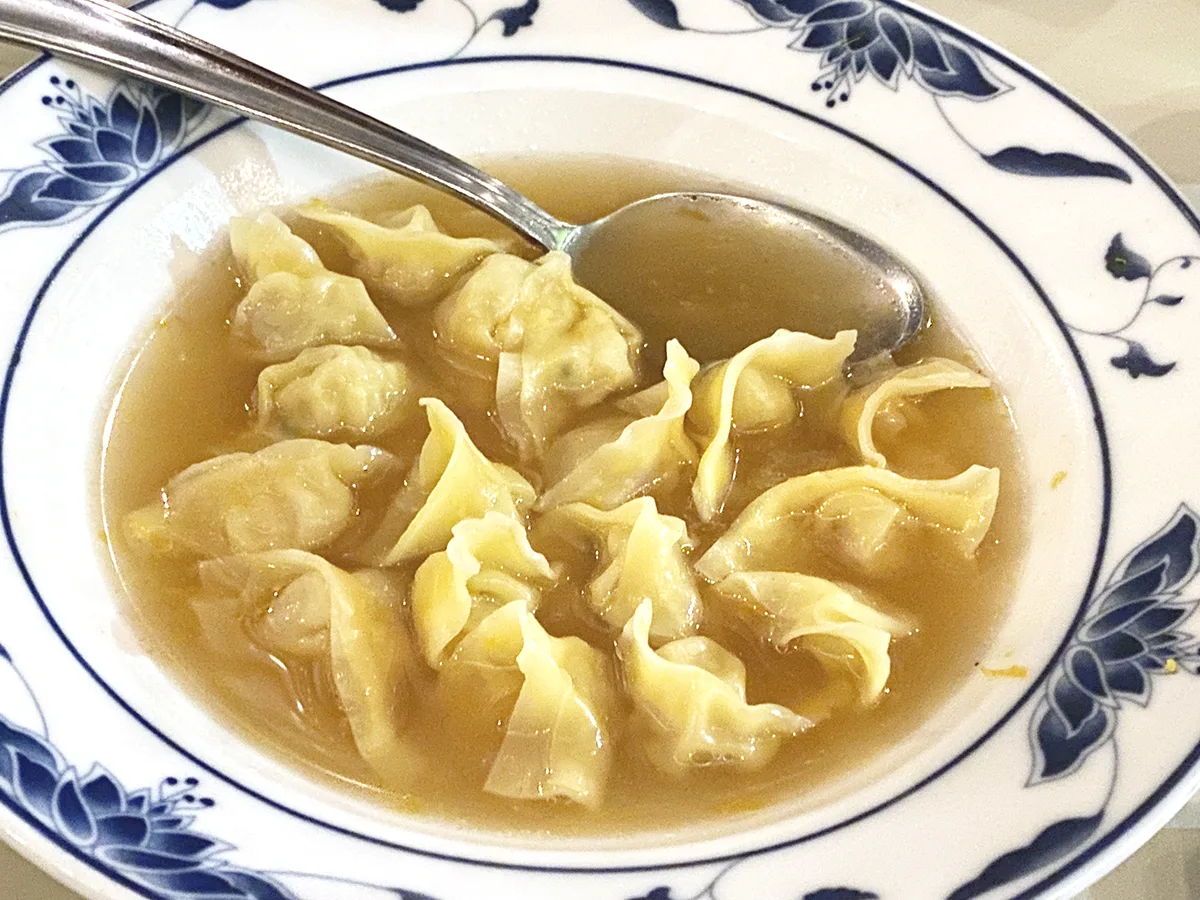
The dumplings in broth were wildly good, if simple in flavor. They also set the tone for our meal in 2022 that we were eating a distinctly Chinese inspired dish.
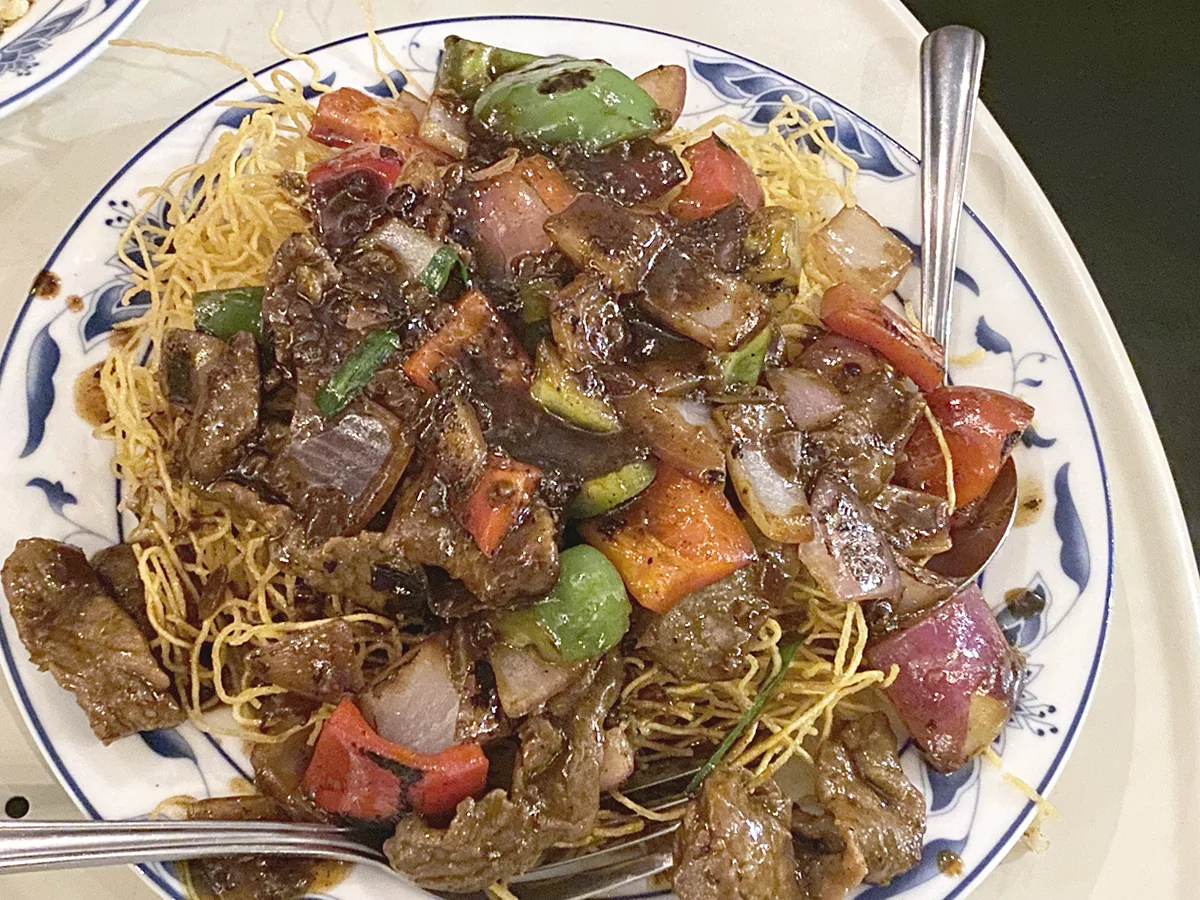
The pepper steak had a terrific texture to it, rich and umami in flavor. But also I’ve spent the last several decades blowing out my tastebuds on Sichuan spice, and on the sweet and salty profile of Shanghai-inspired cuisine. By comparison, the pepper steak lacked a strong flavor other than umami.
But the menu has evolved.
The wonton soup and the pepper steak were missing from the Menu when we ate there earlier this month.
We started our evening with cocktails. I ordered the sour cherry negroni and my wife had the espresso martini. Are you even a bar in 2025 if you don’t have an espresso martini? (It was notably on the menu when the restaurant opened).
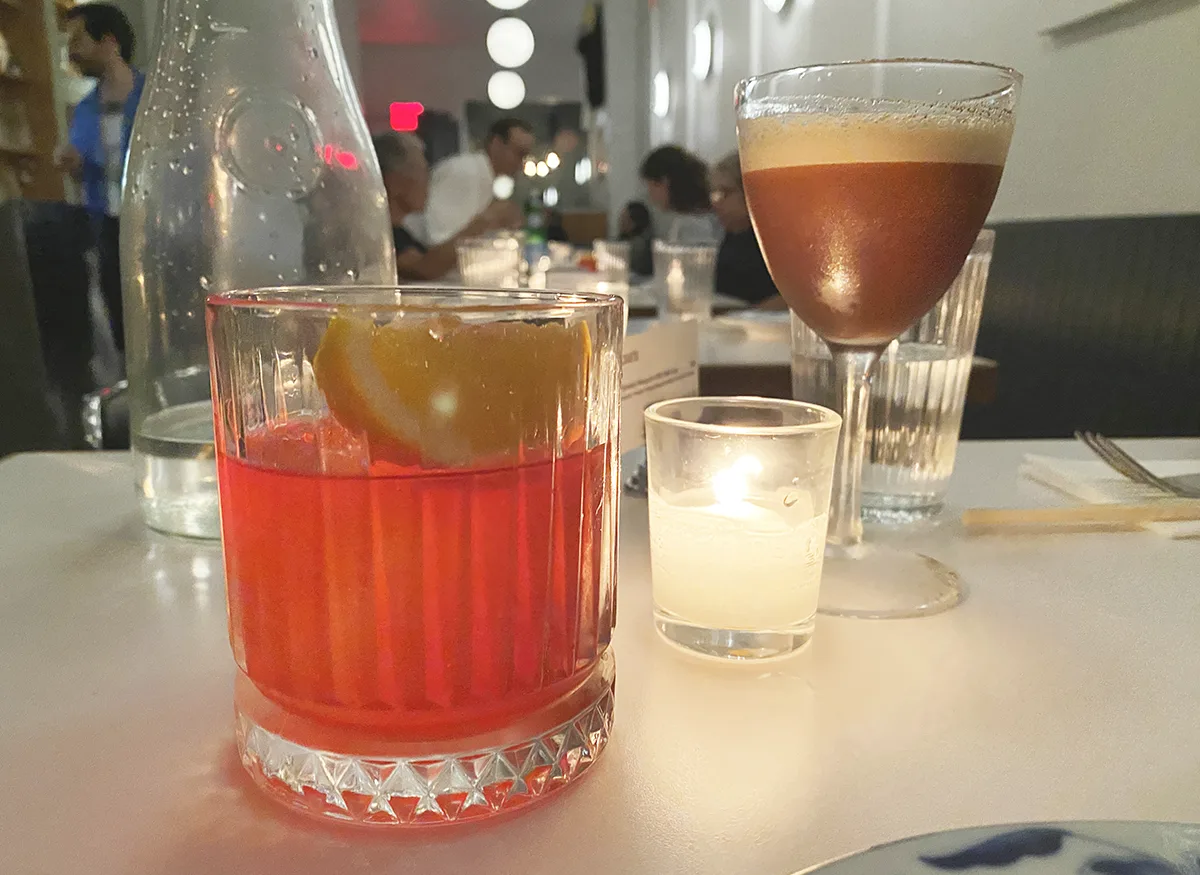
The sour cherry Negroni was the kind of drink you would order by the pitcherful and then stand up and wonder why you fell down. It was smooth and sweet and just a perfect kind of drink.
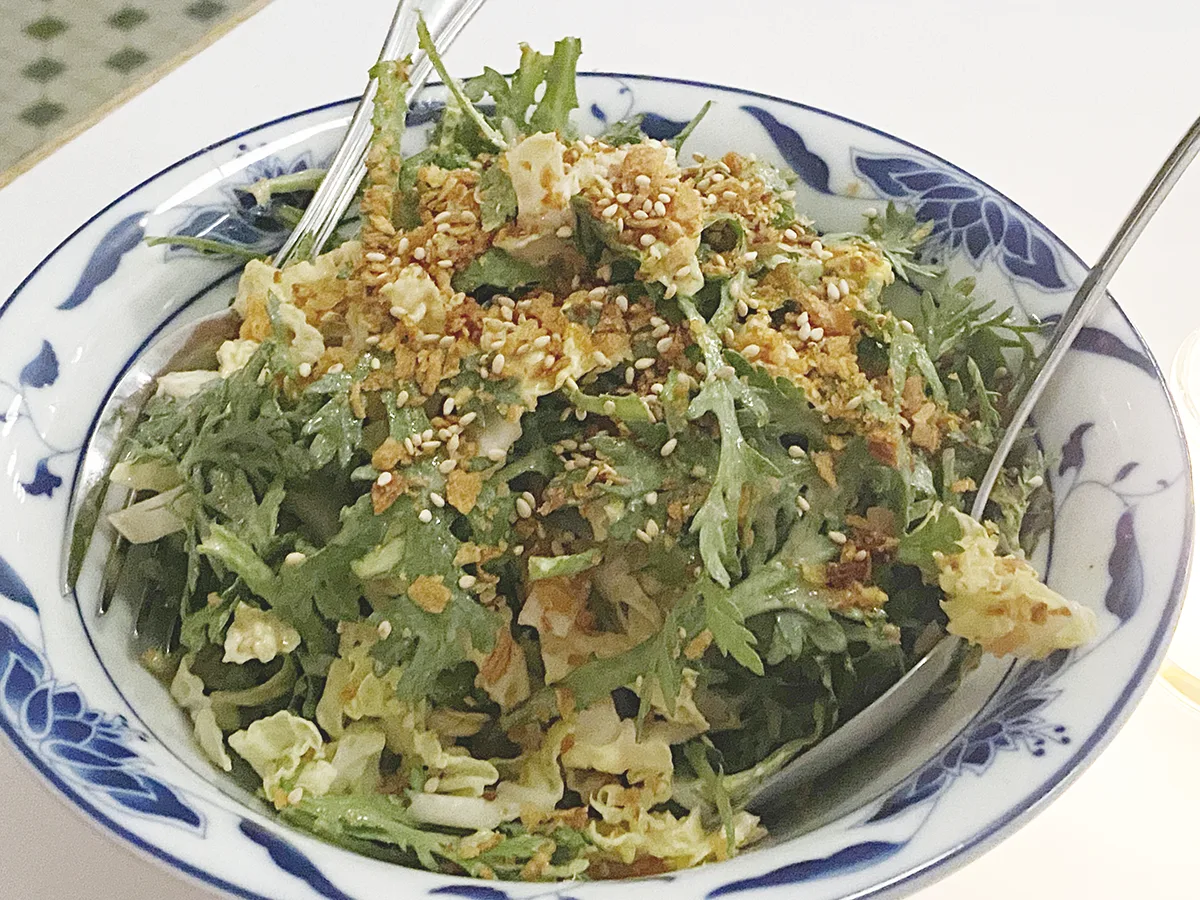
We started with the Chrysanthemum green salad. The flavors offered a strong acidity, followed by a hint of floral. There was also a savoriness that lingered that might have been sesame or even straight up MSG. It felt light on the palette, even if it wasn’t.
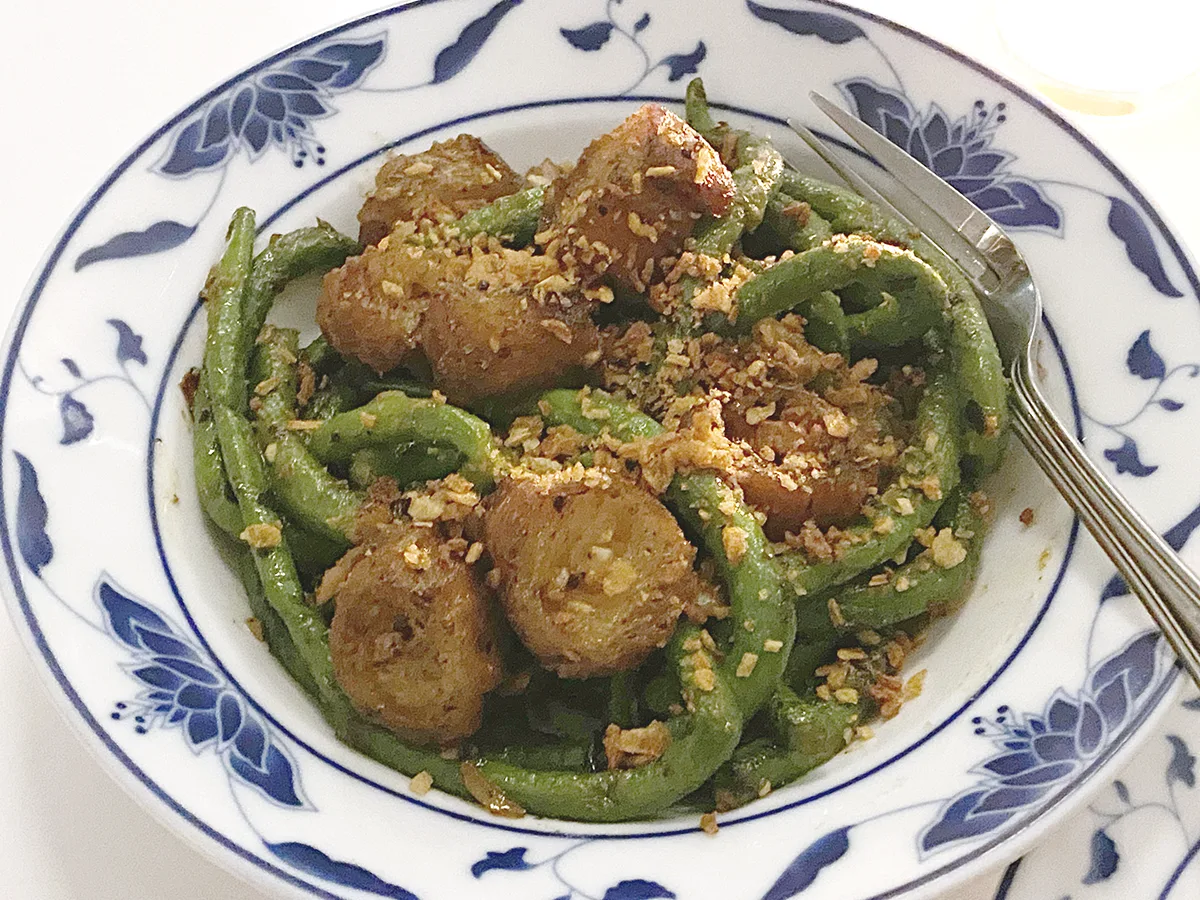
The long beans followed, and it was clear the kitchen was churning out long bean dishes for several tables all at once since the waitress had two in her hand when she brought ours. This is one reason so many restaurants have shifted to a system of serving dishes as they come out of the kitchen rather than a proper dinner service. Since my wife and I wear splitting everything anyway, the pace and structure worked fine for us — but I could see how this might irritate my boomer-age parents.
The highlight of the long beans were the chunky fried bean curds. Savory flavors exploded in the mouth as I bit into them. I wanted more of them and by comparison the beans were far less interesting, in part because they were not al dente enough for my preference. Other than the bean texture, the the sauce brought a good flavor to the party.
Here’s were we leaned into the more Brooklynish elements of the menu, and it is worth pointing out that Bonnie’s is located in the of Italian section of Williamsburg. The convergence of Italian and Chinese cuisine is not unprecedented. Historically, in Manhattan, Chinatown and Little Italy’s proximity frequently led to cultural exchanges between the communities. Bonnie’s appears to be embracing that tradition by infusing their menu with Italian-ish elements.
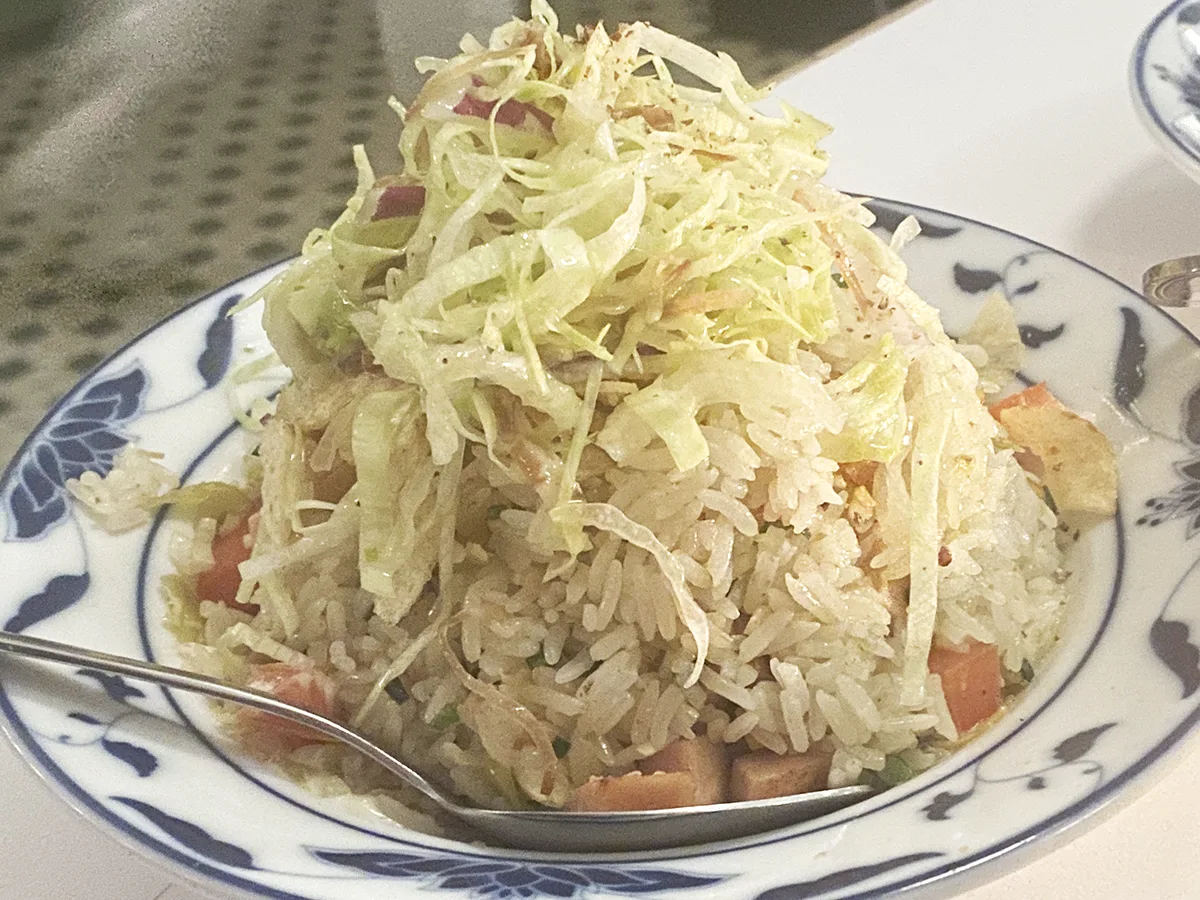
We ordered the Italian Combo Fried Rice cooked with bologna and hot capicola and topped with lettuce, tomato, and potato chips. This was an absolute delight and legitimately tasted like an Italian combo sandwich with a heavy oil and vinegar dressing. Even the dash of peperoncini mayo elevated the dish, and the crispy potato chips added a unique texture. The balance of vinegar alongside the cherry Negroni was an absolutely perfect balance too.
The rice arrived at the same time as the cacio e pepe, and Bonnie’s nailed this dish as well. The dish was part of Bonnie’s opening menu, but its telling that it remains while some of the more Cantonese dishes have disappeared.
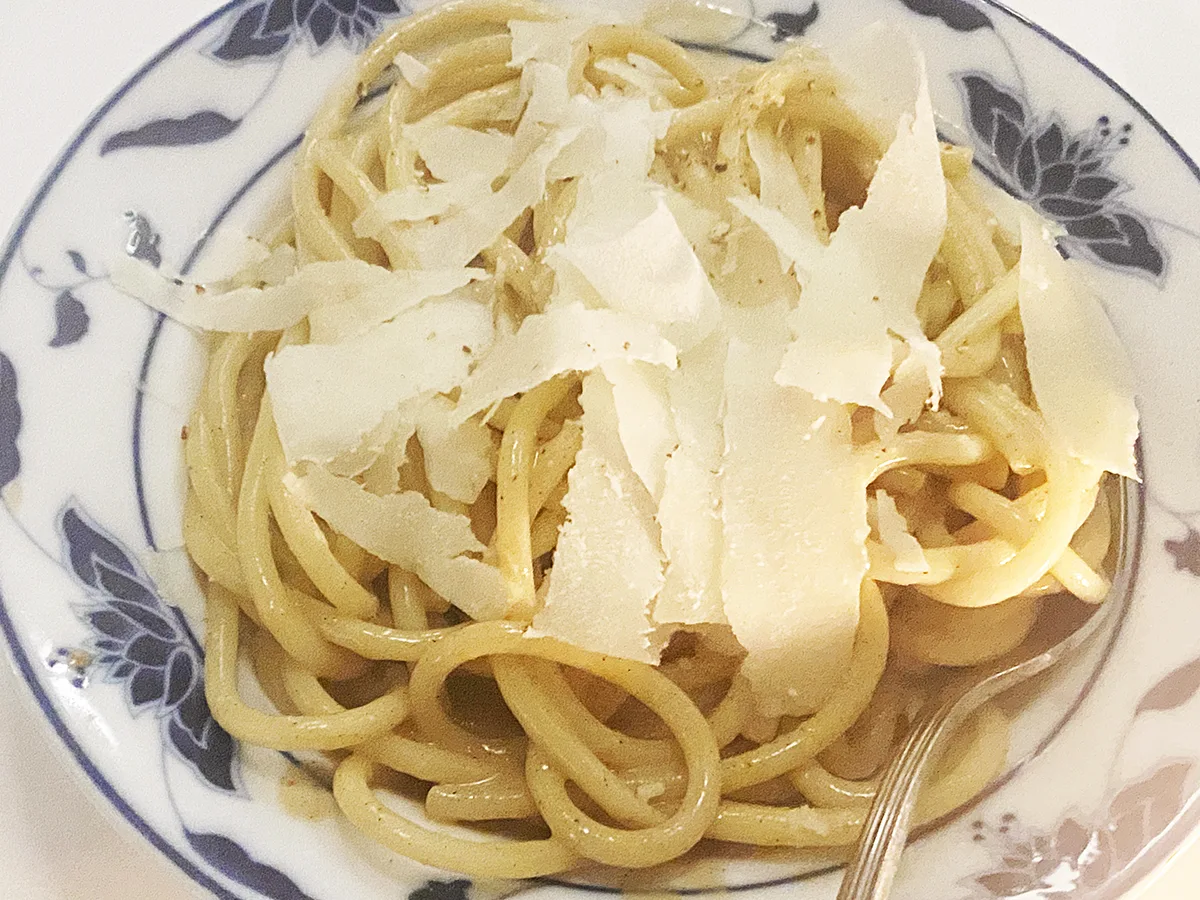
Cacio e pepe is a very old Italian dish, a combination of hard, grated cheese and black pepper. It was a simple thing usually made at home or available simply because a restaurant kitchen had the ingredients on hand and everyone knew how to make it.
Cacio e pepe was sort of nothing dish until the early to mid-2000s, when Chef Nancy Silverton, who had worked with Joe Bastianich and Mario Batali, introduced a traditional cacio e pepe to Osteria Mozza in Los Angeles. Her dish set off an arms race among chefs to create all kinds of variants, and now cacio e Pepe has become a kind of go-to flavor for pizzas, arancini, and other Italian-ish dishes. Dave Chang and Josh Pinsky also introduced a version made with fermented chickpea paste at Momofuku Nishi.
Although Bonnie’s has had cacio e pepe on the menu since it opened, I shied away from it on our first visit. The description made it sound a bit too much like the Chang-Pinsky version, for which I had read mixed reviews of. I was wrong to hesitate. Bonnie’s cacio e pepe was fantastic. The dish used thick bucatini for a terrific mouthfeel, and the peppery spice really followed through on the backend.
After our starch, we were ready for the meaty McRib. The sandwich is an upscale recreation of McDonald’s famous pork sandwich. Early menus called it a Cha siu McRib though on the menu it’s now listed as a cha siu bkrib sandwich, no doubt to avoid the ire of McDonald’s legal department.
The bkrib is a headline grabbing menu item. It’s bait for food writers and bloggers to talk about, and that’s why I ordered it back in 2022 and again more recently. It’s a gourmet recreation of a dish that’s pedestrian, mass marketed, and plays to the most basic tastes of sweet, savory, and spicy.
I do think its worth questioning whether in creating these imitations, are chefs actually attempting to elevate fast food or instead asserting themselves as better than it. How often do chefs and their kitchen staff claim their favorite foods are greasy burgers from a late night fast food joint rather than the carefully crafted items? This trope serves as the denouement in the horror film, The Menu, where wealthy food enthusiasts gather on an island for a unique dining experience, only to find themselves the center of a murder party. Our heroine escapes after eating a simple cheeseburger.
We crave the prosaic. We are nostalgic for the past. And its in that emotional connection chefs are trying to make in these kinds of recreations.
Rib sandwiches aren’t unique to McDonalds, with their invention in the 1920s and 1930s, a time when many modern sandwiches have their origin. Martin Cizmar points to a 1928 article from Kansas, for instance, and attributes the rise of rib sandwiches to the advent of sliced bread.
But in referencing the McRib, Eng changes this sandwich from a southern barbecue tradition to a fusion of American and Chinese American cuisine, entraps us with the promise of childhood memories and piggybacks on the hype created by the limited availability of the rib sandwich at McDonalds.
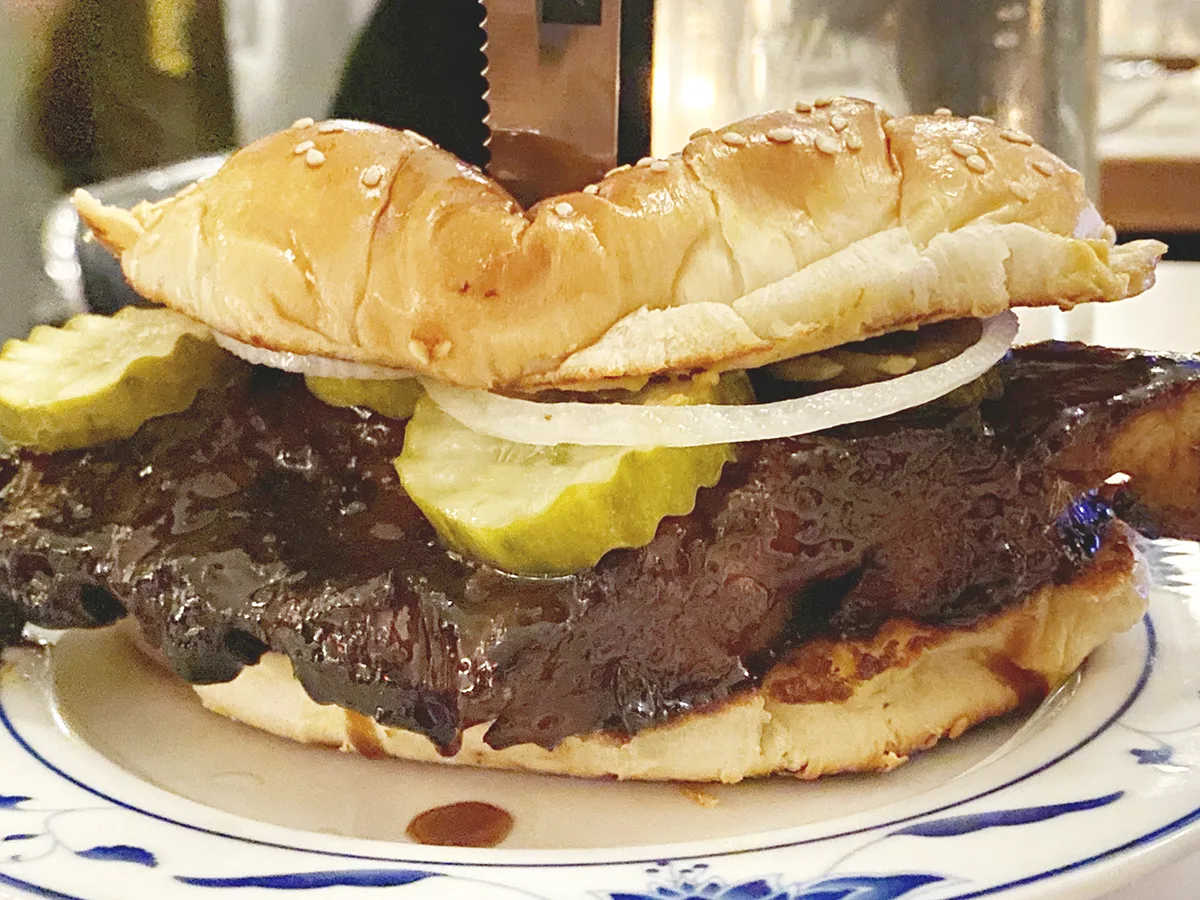
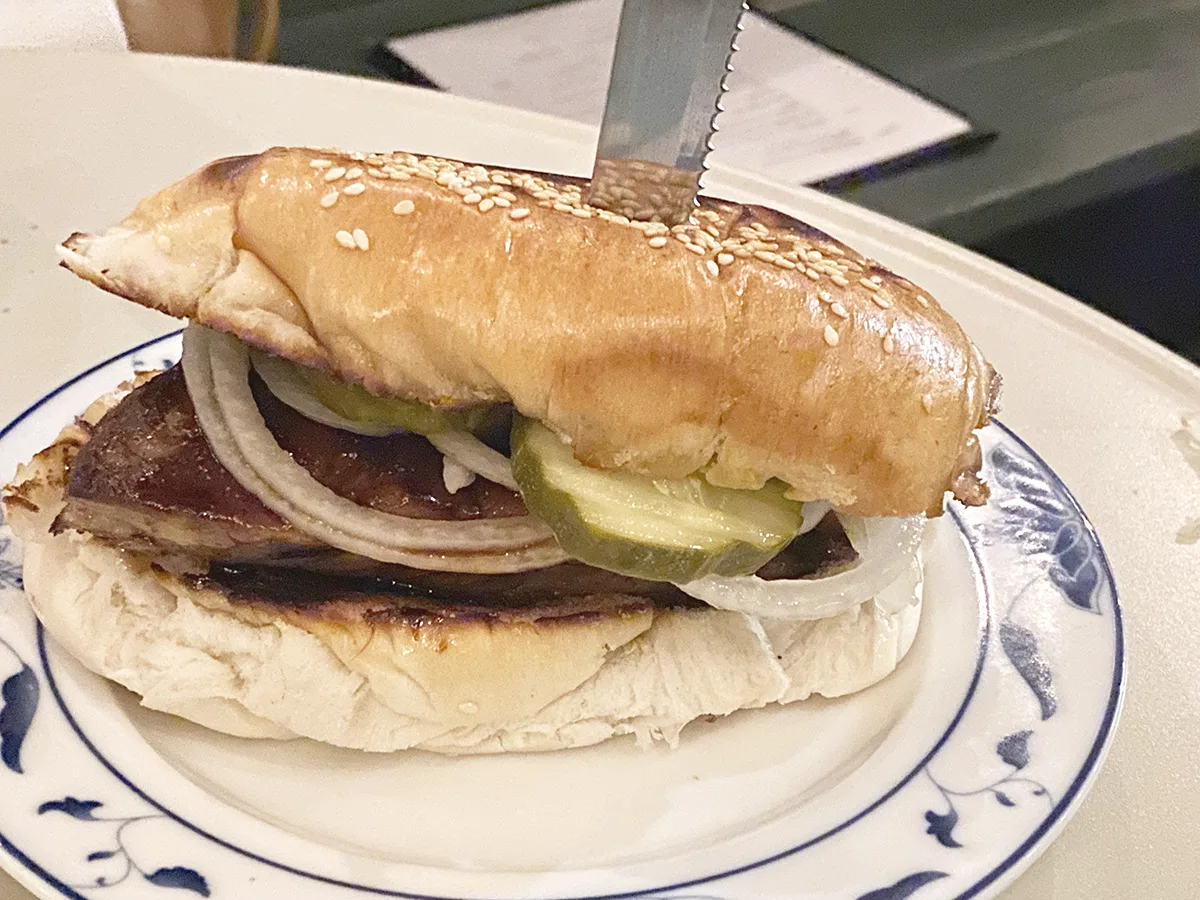
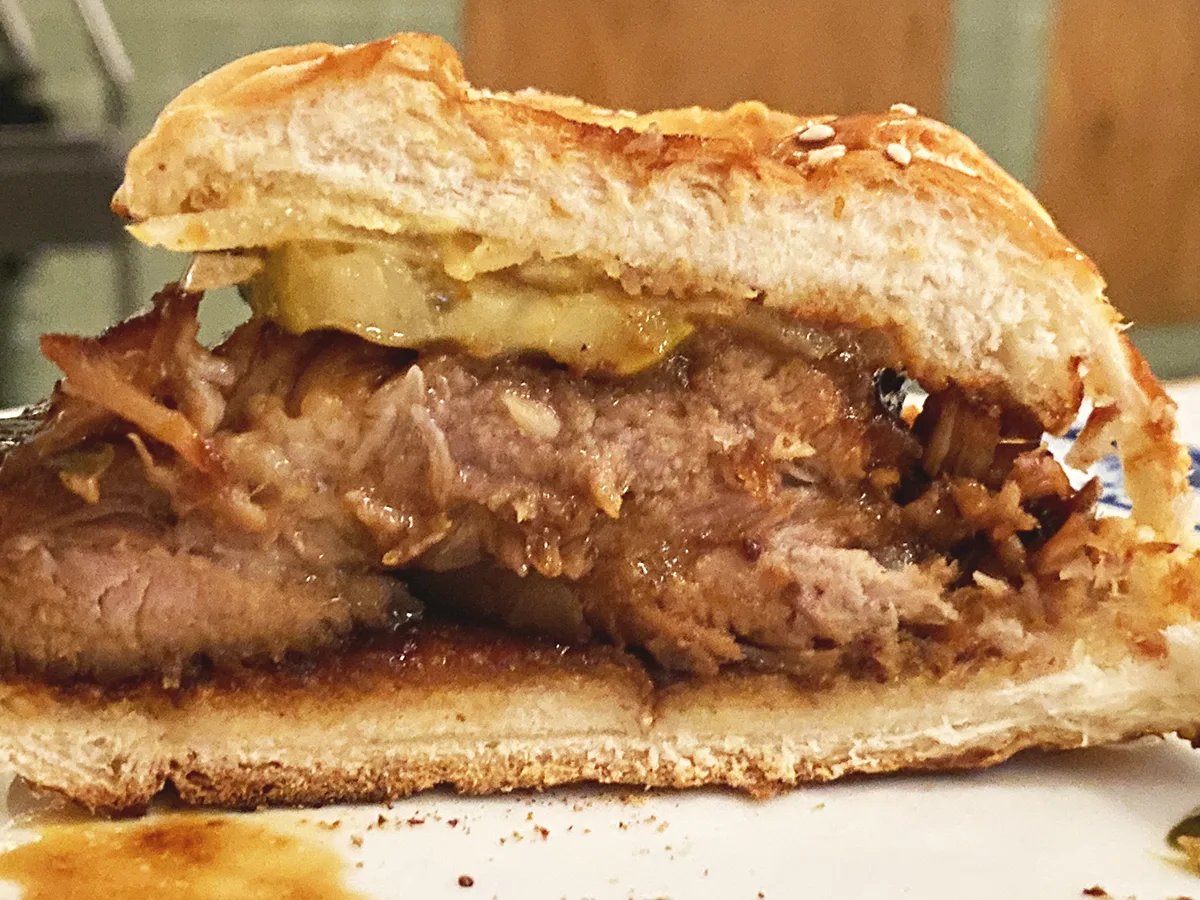
This was a hefty sandwich, and not much has changed about it in three years. You can now order it with french fries, though we declined them. It may just be coincidence, but it does seem like there was more meat on the current version.
The pork here is super tender and while it’s not quite as sweet as a McDonald’s McRib, that’s very much in its favor. We ended up taking half the sandwich home, and that half a sandwich reheated the next day really well.
Here’s the thing though. I feel compelled to compare the BkRib to the McRib because it was such a big part of marketing the restaurant. The NY Post even mentioned the sandwich in the headline, as intended, of their coverage, This hipster chef’s playful riff on the McRib is drawing crowds to Brooklyn. But the BKRib stands on its own as a good sandwich (a great sandwich the next day when I was looking for a quick lunch). It doesn’t actually need the borrowed branding; it could just simply be a rib sandwich.
The one reason though I failed to eat the second half of the sandwich was I was holding out for one last dish: the fruit plate.
The fruit plate found fame all on its own after Bon Appétit filmed a day with line cook Tristan Kwong on his daily trip to Chinatown’s fruit market. The fruit plate is symbolic as much as it is delicious, representing the conclusion of the meal, a tradition for Cantonese banquet meals, like those served at celebrations for weddings or babies.
At Bonnie’s, the dish changes daily based on fruit availability. On Kwong’s shopping trip in Manhattan, he takes viewers through a tour of the fruit market selecting produce based on price.
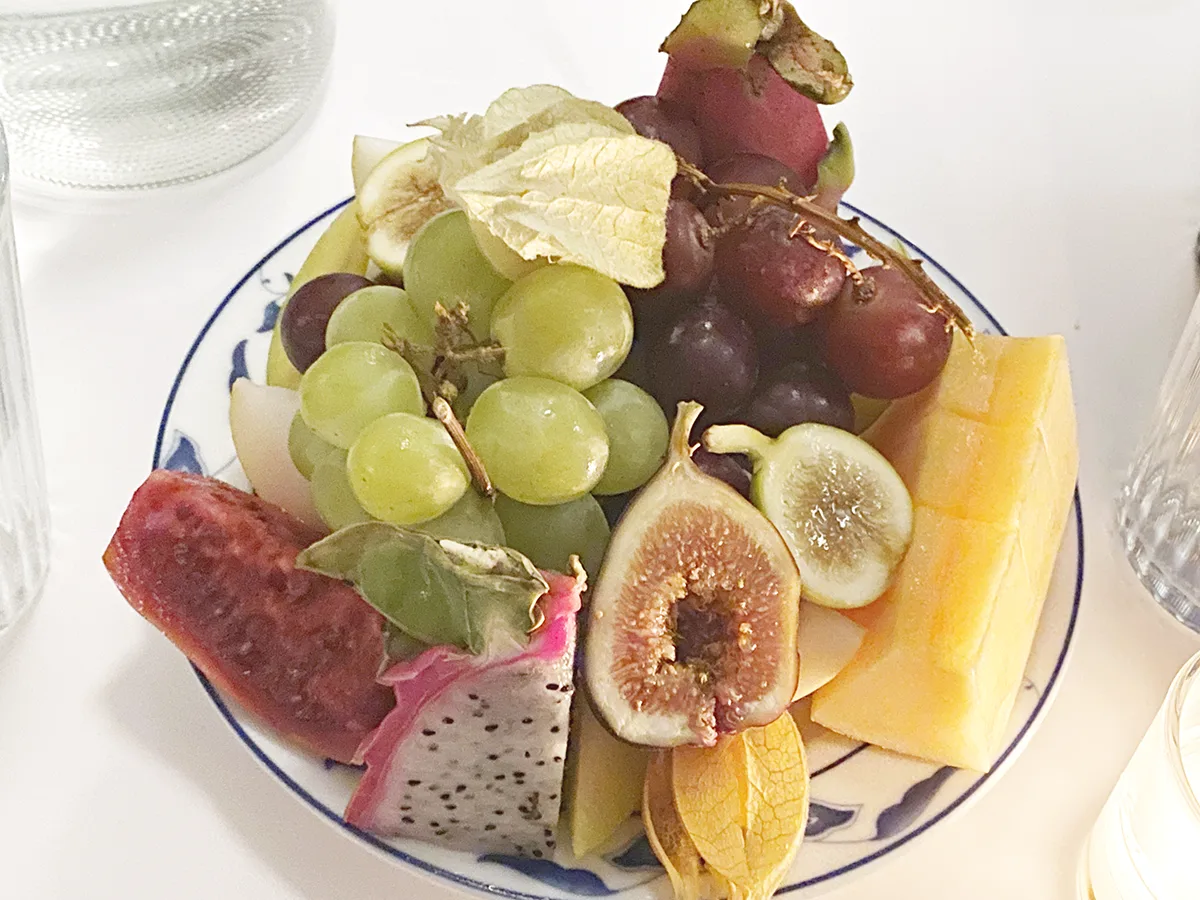
I watched Kwong’s video long after our first trip, so I hadn’t thought to order it. But I knew I wanted to give it a try this time around. I wasn’t disappointed either. It consisted of simple mix of fresh fruits that I don’t normally buy myself. It was a fun conclusion to the meal that left use refreshed.
I am glad we returned to Bonnie’s, even with so many new options opening in the neighborhood in recent months. The restaurant is growing into its place in Brooklyn, a high quality neighborhood spot bringing just enough change to keep the menu fresh. Sure, there are crowd pleasers and headline makers like the knock-off McRib, MSG Martini, and fried milk sundae designed to attract the trend-chasers. But the quiet evolution of the menu shows there’s more from this kitchen it than the initial shiny tricks.

